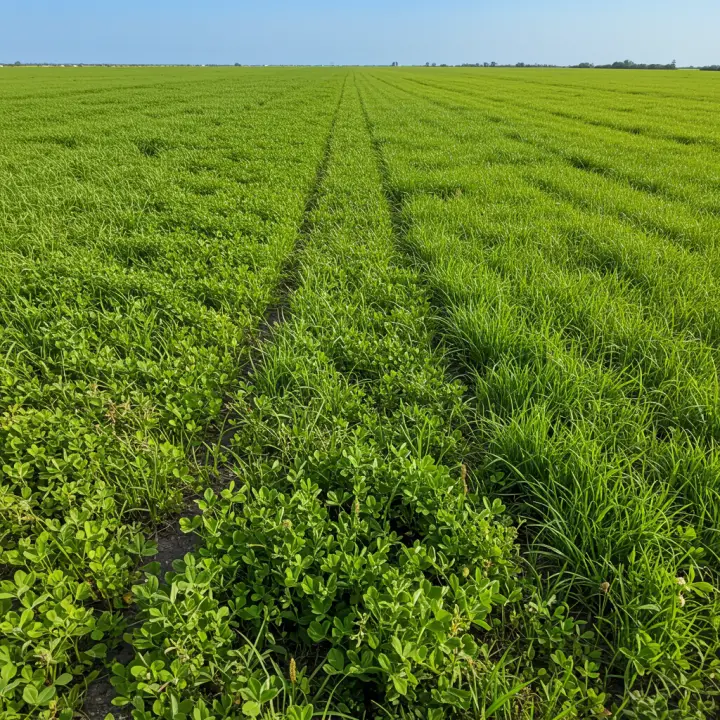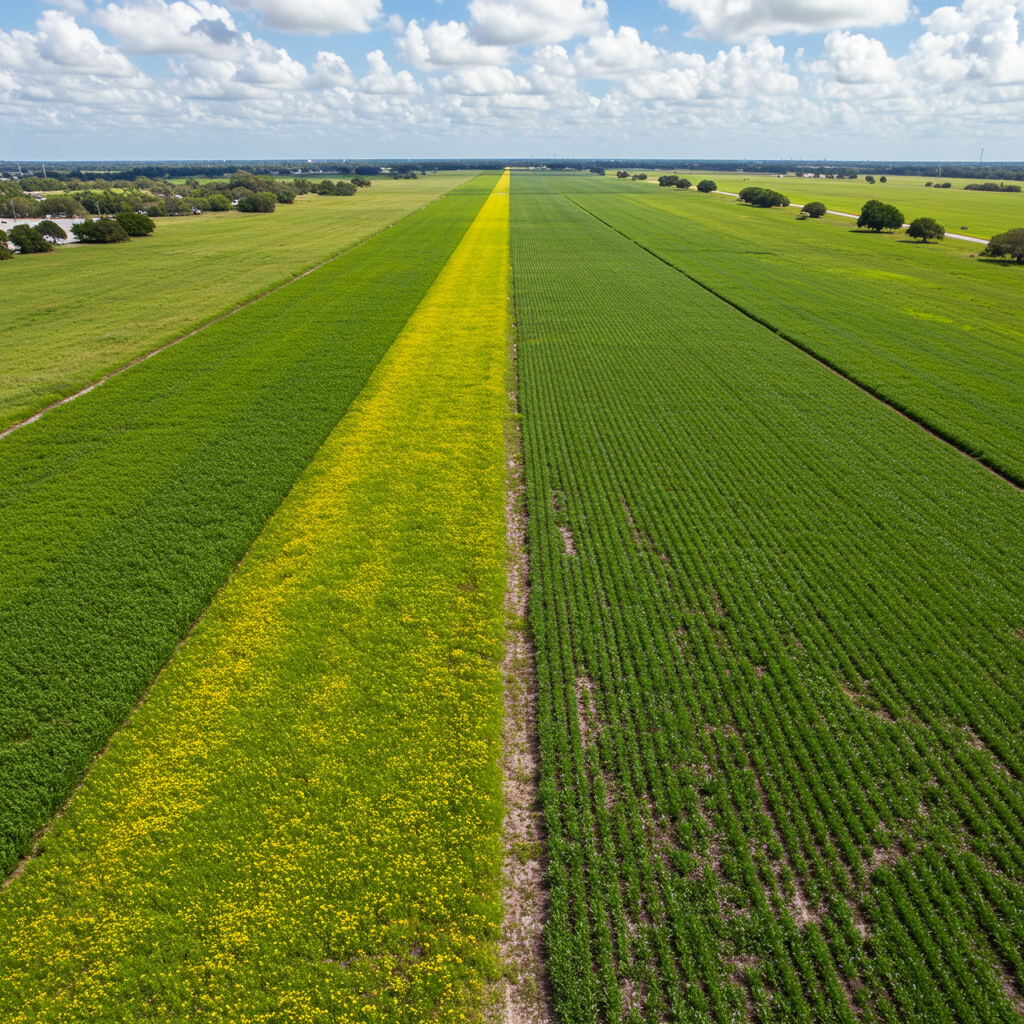The best cover crop for Bahia grass in Florida ultimately depends on your specific goals, but for summer nitrogen fixation and nematode suppression, Sunn Hemp is a top performer, while a mix of Crimson Clover and Annual Ryegrass is ideal for winter grazing and soil building. This guide will walk you through choosing the perfect option to revitalize your sandy soils and boost your Bahia’s productivity.
Revitalizing Florida’s Sandy Soils for Thriving Bahia Grass

Bahia grass is the workhorse of Florida pastures and lawns. It’s tough, drought-tolerant, and handles the relentless summer heat. But even this resilient grass can struggle in Florida’s notoriously sandy, low-organic-matter soils. Over time, compaction, nutrient leaching, and pest pressure can lead to thinning pastures and declining forage quality. The solution isn’t always more fertilizer; it’s about building a healthier foundation from the ground up. This is where cover cropping comes in—a powerful, sustainable tool to breathe new life into your land.
This ultimate guide will explore the top cover crop choices for Bahia grass systems in Florida. We’ll break down which crops to plant based on your goals, from boosting nitrogen to fighting off nematodes, and provide practical advice on planting, management, and termination.
Why Bother with Cover Crops for Your Bahia Grass?
Before we dive into which cover crops to use, it’s essential to understand why they are so transformative, especially in the unique environment of Florida. Integrating cover crops into your Bahia management plan is an investment in long-term soil health and productivity.
Boosting Soil Organic Matter in Sandy Soils
Florida’s sandy soils are infamous for their low organic matter content. This means they don’t hold water or nutrients well. Cover crops produce a large amount of biomass (leaves, stems, and roots) that, when terminated, breaks down and becomes organic matter. This acts like a sponge, dramatically improving your soil’s ability to retain moisture and essential nutrients.
Natural Weed Suppression
A dense stand of a cover crop can outcompete and smother troublesome weeds, reducing the need for herbicides. Some cover crops, like Sorghum-Sudangrass or certain mustard varieties, are “allelopathic,” meaning they release natural biochemicals that inhibit the growth of nearby weeds, giving your Bahia a clean slate to thrive.
Enhancing Nutrient Cycling (Nitrogen Fixation)
Legume cover crops, such as Sunn Hemp and Crimson Clover, have a symbiotic relationship with soil bacteria that allows them to pull nitrogen—a critical nutrient for plant growth—from the atmosphere and “fix” it into the soil. When the legume decomposes, this free, natural nitrogen becomes available for your Bahia grass, reducing your reliance on synthetic fertilizers.
Breaking Up Soil Compaction
Years of grazing, haying, and equipment traffic can lead to a compacted layer of soil, or “hardpan,” that restricts root growth and water infiltration. Cover crops with deep, powerful taproots, like Daikon Radish, can act as “biological drills,” punching through this compacted layer. As these roots decompose, they leave behind channels that improve aeration and drainage for future Bahia root growth.
Managing Pests and Nematodes
Certain cover crops are miracle workers for pest management. Sunn Hemp, for example, is highly effective at suppressing root-knot nematodes, a major pest for many Florida crops and a stressor on Bahia grass. Brassicas like mustard can act as “biofumigants,” releasing compounds that are toxic to soil-borne pathogens and pests.
Improving Water Retention
By increasing organic matter and creating deep root channels, cover crops significantly enhance your soil’s water-holding capacity. In Florida’s cycle of intense downpours and prolonged dry spells, this means more water infiltrates the soil instead of running off, and it stays there longer, making your Bahia pastures more resilient to drought.
Understanding Your Goals: Choosing the Right Cover Crop
There is no single “best” cover crop for every situation. The ideal choice depends entirely on what you want to achieve. Let’s identify the most common goals for Bahia pastures in Florida and match them with the right type of cover crop.
Goal: Maximum Nitrogen Fixation -> Choose a legume like Sunn Hemp (summer) or Crimson Clover (winter).
Goal: Weed Control and Biomass -> Choose a high-biomass grass like Sorghum-Sudangrass (summer) or Annual Ryegrass (winter).
Goal: Breaking Up Hardpan -> Choose a brassica with a deep taproot, like Daikon Radish.
Goal: Winter Grazing Forage -> Choose a palatable grass/legume mix like Forage Oats and Crimson Clover.
Goal: Nematode Management -> Plant Sunn Hemp in the summer for highly effective suppression.
Top Cover Crop Contenders for Florida’s Bahia Pastures
Here is a detailed breakdown of the most effective and popular cover crops for Florida’s climate, categorized by their family type.
The Legumes: Nitrogen Powerhouses
Legumes are the cornerstone of any soil-building program focused on fertility. They are the key to unlocking free atmospheric nitrogen.
Sunn Hemp (Crotalaria juncea)
If there’s one superstar summer cover crop for Florida, it’s Sunn Hemp. This fast-growing tropical legume is a true workhorse for renovating tired Bahia pastures.
Pros:
Incredible Nitrogen Fixation: Can produce over 100 pounds of nitrogen per acre in just 60-90 days.
Excellent Nematode Suppression: Highly effective against harmful root-knot nematodes.
Rapid Growth: Quickly produces a massive amount of biomass (up to 5,000 lbs/acre of dry matter), smothering summer weeds.
Drought Tolerant: Once established, it handles Florida’s dry spells with ease.
Cons:
Not cold tolerant; it’s strictly a warm-season crop.
Can become woody if left to grow too long, making termination more difficult.
Best Use Case: Planted in summer to prepare a field for new Bahia establishment or to rejuvenate a weak, nematode-infested pasture.
Crimson Clover (Trifolium incarnatum)
Crimson Clover is the classic cool-season legume for the Southeast. Its brilliant red flowers are not only beautiful but also a sign of hard-working soil improvement.
Pros:
Good Nitrogen Fixation: Can add 50-90 pounds of nitrogen per acre.
Excellent Forage Quality: Highly palatable for livestock, making it a great addition to a winter grazing mix.
Attracts Pollinators: Supports beneficial insects.
Can reseed itself under proper management.
Cons:
Does not tolerate wet, poorly drained soils well.
Can cause bloat in livestock if grazed exclusively.
Best Use Case: Overseeded into dormant Bahia in the fall (October-November) to provide winter ground cover, fix nitrogen, and offer high-quality forage.
Cowpeas (Vigna unguiculata)
Also known as southern peas, cowpeas are another excellent warm-season legume that thrives in Florida’s heat and humidity.
Pros:
Heat and Drought Tolerant: Very well-suited to Florida summers.
Good Nitrogen Fixer: Produces significant nitrogen for the following crop.
Versatile: Multiple varieties are available, including vining types for ground cover and bush types.
Cons:
Can be attractive to deer, which may be a pro or con depending on your goals.
* Best Use Case:** A great alternative or companion to Sunn Hemp in a summer mix to add diversity and fix nitrogen.

